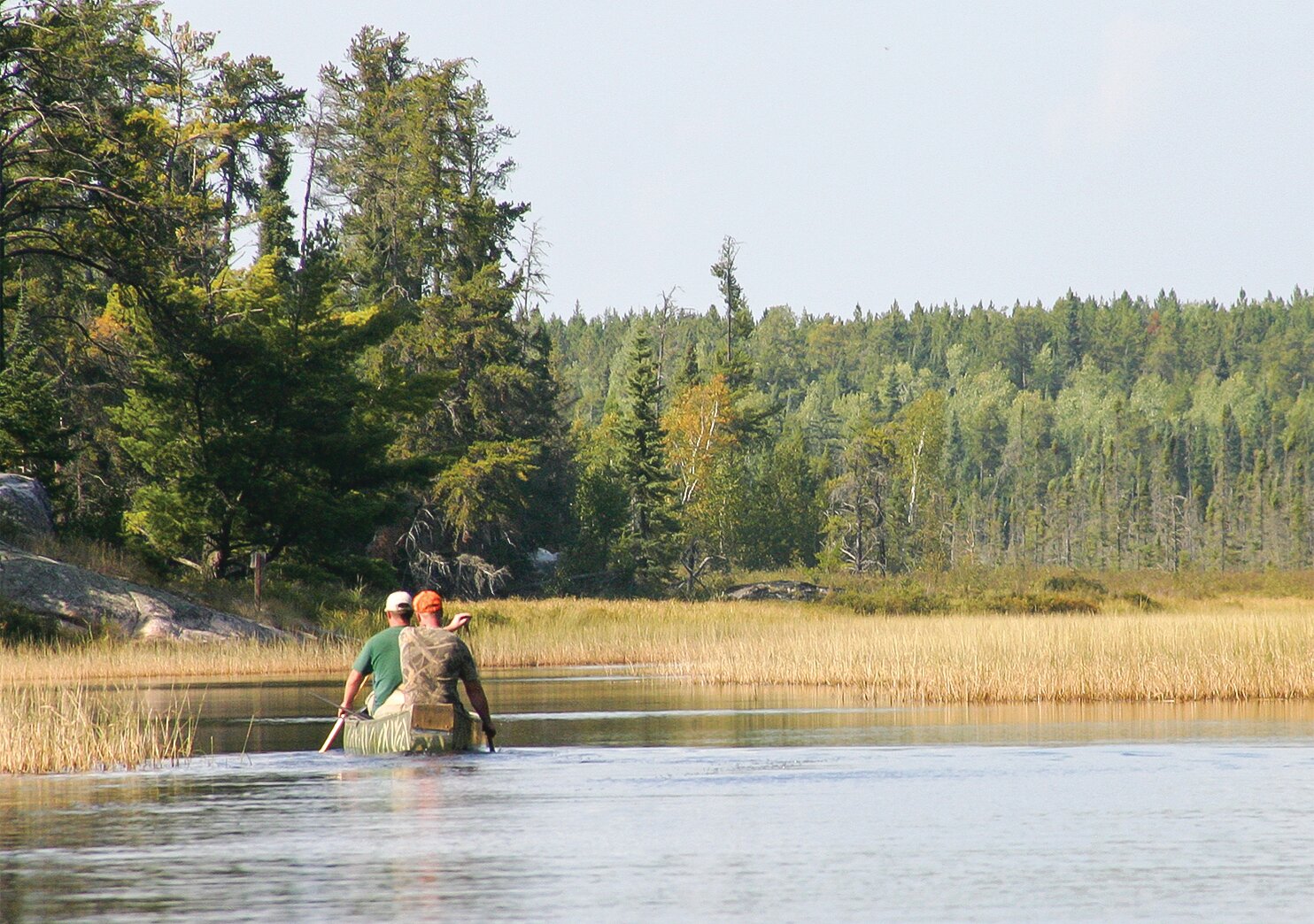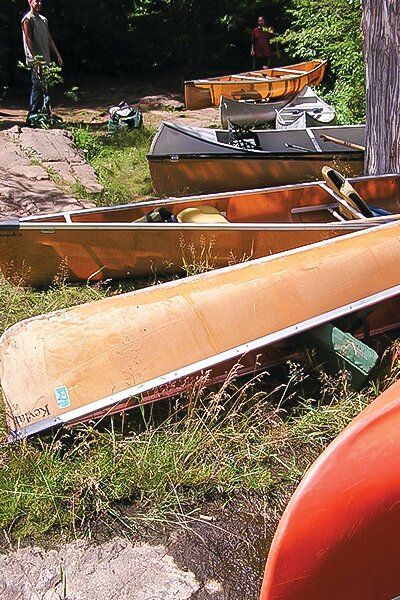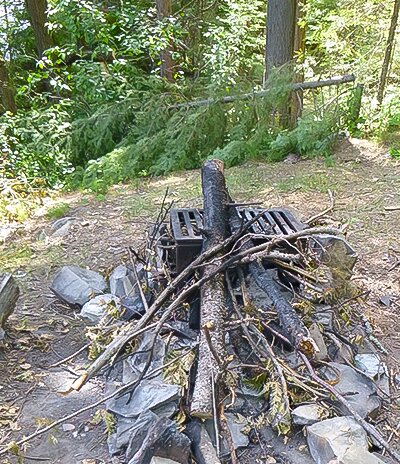Support the Timberjay by making a donation.
Forest Service seeks input for changes in BWCAW management
THE BOUNDARY WATERS— Change appears to be afoot in the Boundary Waters Canoe Area Wilderness as officials on the Superior National Forest look to update a management plan to better fit the …
This item is available in full to subscribers.
Attention subscribers
To continue reading, you will need to either log in to your subscriber account, below, or purchase a new subscription.
Please log in to continue |
Forest Service seeks input for changes in BWCAW management
THE BOUNDARY WATERS— Change appears to be afoot in the Boundary Waters Canoe Area Wilderness as officials on the Superior National Forest look to update a management plan to better fit the changing uses and challenges facing the 1.1-million-acre wilderness.
“The management direction for the BWCAW was last updated in 1993,” said Tom Hall, Forest Supervisor on the Superior National Forest. “Our implementation and monitoring over the past 30 years, and changes to national wilderness management policy and guidance, has highlighted several issues affecting wilderness character in the BWCAW and the wilderness experience for visitors.”
Officials on the Superior are looking for public input as part of their effort to update management policies and practices within the wilderness, and there will be multiple opportunities (see sidebar) for those who care about the Boundary Waters to weigh in on possible changes between now and May 17, when the public input phase will come to a close. According to Hall, this initial input phase is meant to be collaborative, to help the Forest Service better understand public desires for future management of the popular wilderness. “In my mind, all things are on the table, but not all things are going to change,” said Hall during a Tuesday interview with the Timberjay.
The possible changes would come as an amendment to the current forest plan, which entails an extended NEPA process with multiple opportunities for public input. The current round of input will help the Forest Service gauge the extent of the change, if any, sought by the public. “It’s about determining the scope and the scale as we start to think about this,” said Hall.
The latest call for comment comes in parallel with a study by the John S. McCain III National Center for Environmental Conflict Resolution, commissioned by the Forest Service, that included in-depth discussions with more than 100 individuals in hopes of better understanding concerns around management of the Boundary Waters. The forum created by the center for that effort is expected to continue through the amendment process, as the Forest Service recently entered into a new contract with the center. The forum, known as the Boundary Waters collaborative, had a kick-off meeting last week that included stakeholders across a broad range of categories. “We fully expect this will be a forum to discuss the broader issues [associated with the plan amendment],” Hall said.
The Boundary Waters is not only the most heavily-used wilderness area in the country, it is relied upon by an exceptionally large array of service businesses that are a major part of the economy in wilderness-edge communities, like Ely and Grand Marais.
While the economic impact of the wilderness is significant, recreation is just one of several management goals associated with the BWCAW, and Forest Service officials note that their mission is to balance the demand for recreation with protection of the wilderness itself. As managers of the wilderness, Hall said the Forest Service has to respond to indicators that point to degradation of the wilderness through misuse or overuse. “We have seen some impacts to campsites and portages, through things like erosion or site expansion,” said Hall. “When people find degraded sites, it impacts their wilderness experience.”
Hall said changes to the forest plan can better position the Forest Service to restore and preserve wilderness character and meet the purposes of wilderness described in the 1964 Wilderness Act and 1978 BWCAW Act.
Among the many issues related to wilderness management that the Forest Service is considering as part of the updated management plan:
• How increasing visitation and changing trends in the ways that wilderness users utilize public lands and primitive management areas is adversely impacting all four management areas of the BWCAW. Monitoring has indicated both social and ecological impacts, such as crowding, noise, lack of campsite availability, littering, campsite and portage erosion, water quality degradation, and other issues that are negatively impacting the wilderness, both in high-travel zones as well as primitive management areas. There is a need to update management direction to preserve wilderness character to provide opportunities for solitude or a primitive and unconfined type of recreation, restore naturalness, and protect other features of value across the wilderness.
• Possible updates to the management of towboats in portions of the wilderness. The Forest Service issued a BWCAW towboat pre-scoping notice last August, which generated over 1,300 comments, most of which expressed concern with how towboats are managed in the overall motorboat cap within the BWCAW and the impact that towboats have on the wilderness character. Management of the towboat commercial service is just one aspect of the broader issue related to both motorized use and wilderness character, noted Hall, who gave no indication that any major change in the service is in the offing. “Towboats existed prior to 1978 act, was a pre-existing use,” he said. “Until the court tells us otherwise, it’s still within our discretion on how to manage that,” he said. In addition to commercial towboat use, there is a need to consider the context of motorized use in general within the BWCAW, as provided for by existing law.
• How lightning fires could be allowed to play a more natural role within the wilderness. Much of the Superior National Forest has fire-adapted ecosystems and large fires naturally occur in the region periodically. The current forest plan does allow for the use of management-ignited prescribed fire in the BWCAW on a project-by- project basis, which acknowledges the value of fire as a management tool within the wilderness.
Other issues likely to be addressed include but are not limited to fisheries stocking, survey and spawn take, commercial outfitter and guide operations, visitor use management (overnight paddle and hiking quota, campsites), wilderness education plans, the reservation system, and research needs.
Next steps
Based on public input, as well as applicable laws, policies, and regulations, the Superior expects to develop a proposed forest plan amendment to address any need for change identified through the planning process. Once completed, the Forest Service will again notify stakeholders and partners of the proposed amendment and solicit public involvement again as part of its NEPA requirements. Formal public scoping for this project is anticipated in early 2025.
Make your voice heard
Public comments can be made through May 17 on the project webpage electronically, or in hard copy submitted to: Superior National Forest, RE: BWCAW Forest Plan Amendment, 8901 Grand Ave. Place, Duluth, MN 55808
Open House: An in-person event will be held Thursday, April 11, from 4:30-7 p.m. at the SNF Headquarters at 8901 Grand Avenue Place, in Duluth.
Open House: A virtual open house will be held on Thursday, April 18 from 4-6 p.m., utilizing Microsoft Teams for your computer, mobile app or room device. Join the meeting by using Meeting ID: 289 483 854 876, Passcode: XPqvvs. You can download Teams, join on the web or call in (audio only) to 1-202-650-0123, with a code of 407805385#.











